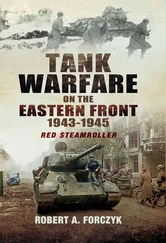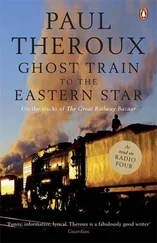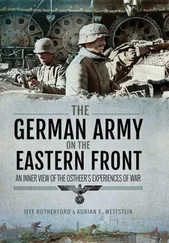The primary operational objectives of the four German panzer groups were Leningrad in the north, Moscow in the center and Kiev and the Donbas region in the south. The distance from their starting positions to their operational objectives was 800km for Panzergruppe 4, 1,000km for Panzergruppe 2 and 3, and over 1,200km for Panzergruppe 1. Hitler expected these objectives to be reached within about ten weeks of the start of Barbarossa, an unprecedented rate of advance in modern military history. However, it was questionable whether German tanks could even move this far in this amount of time, even if much of the Red Army was destroyed on the border. As a general rule of thumb, about 5 per cent of tanks in a given unit will break down for mechanical reasons after a 100km road march, although most can be repaired within a few hours. Just three years before Barbarossa, nearly 30 per cent of the 2.Panzer-Division’s tanks broke down on the unopposed 670km road march to Vienna, along good roads. [3]If the panzer divisions suffered a similar scale of combat losses as in the 1940 Western Campaign, no more than 10–20 per cent of the original panzers would be likely to reach their objectives.
Operation Barbarossa’s bold scheme of maneuver was undermined by very poor intelligence preparation by German intelligence services. In actuality, the OKH intelligence staff had a faulty understanding of the strength and dispositions of the Red Army. German signals intelligence had not detected the reformation of Soviet mechanized corps in July 1940 and believed that the Red Army’s armour was still deployed as independent tank and mechanized brigades. [4]In early June 1941, Oberst Eberhard Kinzel, head of the OKH’s Fremde Heere Ost (Foreign Armies East), assessed that the Red Army would deploy forty-one mechanized brigades with about 9,500 tanks against the Wehrmacht. [5]Kinzel’s shop produced a handbook on Soviet tanks for the panzer groups, which described the various models of the T-26, T-28, T-35 and BT-5/7 in detail. The handbook also included information about a new Soviet heavy tank equipped with 60mm-thick armour and 76.2mm main armament that had been used against the Finns in December 1939; this was the SMK prototype, which the Germans erroneously labeled as the T-35C. Although Kinzel was clearly aware that the Soviets had fielded a prototype heavy tank eighteen months prior to Barbarossa, he assessed that existing German anti-tank weapons could defeat it. [6]
Prior to the German invasion, Stalin wanted to keep his strategic options open, to gain territory when possible, but to avoid being dragged into a fight before he felt the Red Army was ready. He wanted a sizeable portion of the newly-forming mechanized corps positioned near the western borders to deter German attack, but the rest would be deployed further back in reserve. In the event of invasion, the Red Army’s existing war plan directed that all available mechanized corps should be immediately committed to counterattack any German penetrations across the border. Unwittingly, this plan played into German hands, by forcing Soviet tank commanders to send unprepared units into battle piece-meal, directly into the face of on-coming German panzer schwerpunkt (main efforts). Indeed, the German panzer forces would be at their strongest in the border regions, where distance and logistics had not yet attenuated their combat power. However, the German planners in the OKH had no appreciation for the Soviet military philosophy of echeloned attack and defense, which meant that defeating the Red Army in a single campaign would prove far more difficult than the French Army in 1940. The entire essence of the so-called Blitzkrieg doctrine was in using concentrated armoured formations in short, powerful jabs to dislocate an enemy’s defense by isolating his best forces. A reasonable enemy was then expected to sue for peace due to the sudden setback.
However, neither Stalin nor the Red Army had any incentive to be reasonable once it became clear that Hitler’s strategic objective was to exterminate them. By opting for a war of annihilation, Hitler made it impossible for the Wehrmacht to defeat the Red Army in a single campaign.
Terrain and Weather Factors
Between September 1939 and May 1941, German panzer divisions had encountered no serious difficulties in their campaigns due to either adverse terrain or weather conditions (other than the English Channel, which was conveniently ignored). In particular, Panzergruppe Kleist had been able to quickly pass through the ‘impenetrable’ Ardennes Forrest and then conduct successful opposed river crossings across the rivers Meuse and Somme in France. In April 1941, Kleist’s panzers were able to overrun Yugoslavia and Greece in less than three weeks, despite numerous rivers and mountainous terrain. The overriding impression Hitler and the OKH leadership gained from the Wehrmacht’s preceding campaigns was that terrain in itself was not a serious obstacle to the panzers. Nor did Hitler and the OKH have any useful experience with mechanized operations under winter conditions. In contrast, the Red Army had learned painful lessons about the limitations of mechanized units in forested terrain and winter conditions during the 1939–40 Russo-Finnish War and were in the process of incorporating some of the lessons learned.
Crossing rivers or large streams was an essential feature of military operations in the Soviet Union and the relative fording capabilities of tanks had a major impact on the tempo of armoured operations. Although both Germany and the Soviet Union had a small number of tanks with amphibious capabilities, such as the Pz.III and Pz.IV Tauchpanzer and the T-37, T-38 and T-40 light amphibious tanks, the majority of tanks on both sides could not ford water that was deeper than one meter (i.e. chest deep on a man). The bridging capabilities of the 1941–42 panzer divisions were rather rudimentary – a Brüfckenkolonne B or K could construct a 50-meter long pontoon bridge in about twelve hours that could just support a Pz.III medium tank, but the Pz.IV and later Tiger and Panthers needed proper bridges to get across significant water obstacles. Indeed, the Wehrmacht lagged behind the Allies in assault bridging, having nothing like the British Bailey bridge. Soviet tank divisions of 1941 were supposed to have a pontoon bridge battalion, but most were never fully formed or quickly lost during the hectic retreats of 1941. While tanks could often cross smaller rivers at shallow fording sites, these critical locations were usually defended by anti-tank guns and mines. Larger rivers, such as the Dnieper or Volga, could not be crossed without substantial army-level engineer support. Pontoon rafts could be constructed to get small numbers of tanks across a large river, but this was usually only sufficient to defend a bridgehead against enemy counterattack. Thus, the capture of intact bridges – particularly railroad bridges, which could support the weight of tanks – was an important constant in Eastern Front armoured operations: both sides sought opportunities to seize poorly-defended bridges because they allowed tanks to do what they do best – move fast and use their shock effect to disrupt an enemy’s defenses. When bridges or fording sites were not available, armoured operations came to a full stop.
Generally, you can try to go just about anywhere with a tank – at least once – but you may regret that you tried. Armoured operations on the Eastern Front were often impeded or channelized – forced into narrow mobility corridors – due to ‘no-go’ terrain such as marshes or dense forests. The marshlands between Leningrad and Ostashkov in northern Russia and the Pripet marshes were particularly hazardous for armoured operations. Tanks could easily become irretrievably bogged down in marshy terrain, or forced to move along narrow tracks that made them very vulnerable to anti-tank ambushes. In the early border battles in 1941, the Red Army foolishly lost a number of precious T-34 and KV-1 tanks in water-logged areas in the Pripet Marshes. The best tank country on the Eastern Front was the steppe country of the Ukraine, although this region also had the worst mud during the rainy periods. There were areas of ‘slow-go’ terrain in the Soviet Union, including urban areas and the ravines along the River Don, which could cause tanks to throw track. The Germans were particularly shocked by the almost total lack of decent all-weather roads in the Soviet Union, which increased the wear and tear on all vehicles and greatly reduced their mobility.
Читать дальше







![John Stieber - Against the Odds - Survival on the Russian Front 1944-1945 [2nd Edition]](/books/405234/john-stieber-against-the-odds-survival-on-the-russian-front-1944-1945-2nd-edition-thumb.webp)




